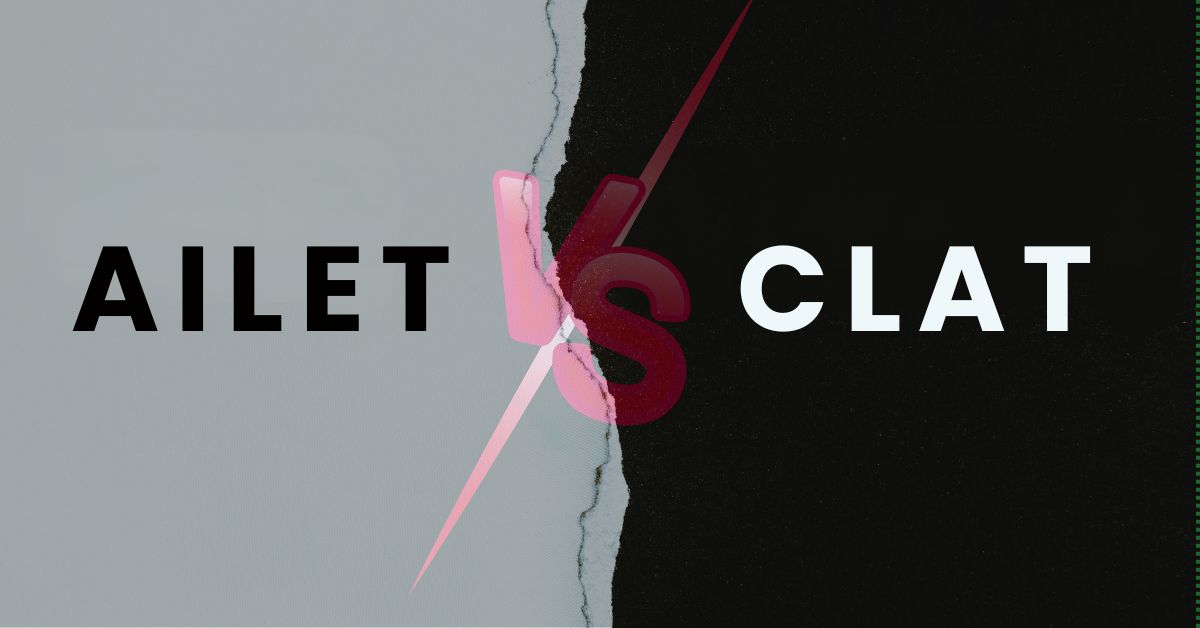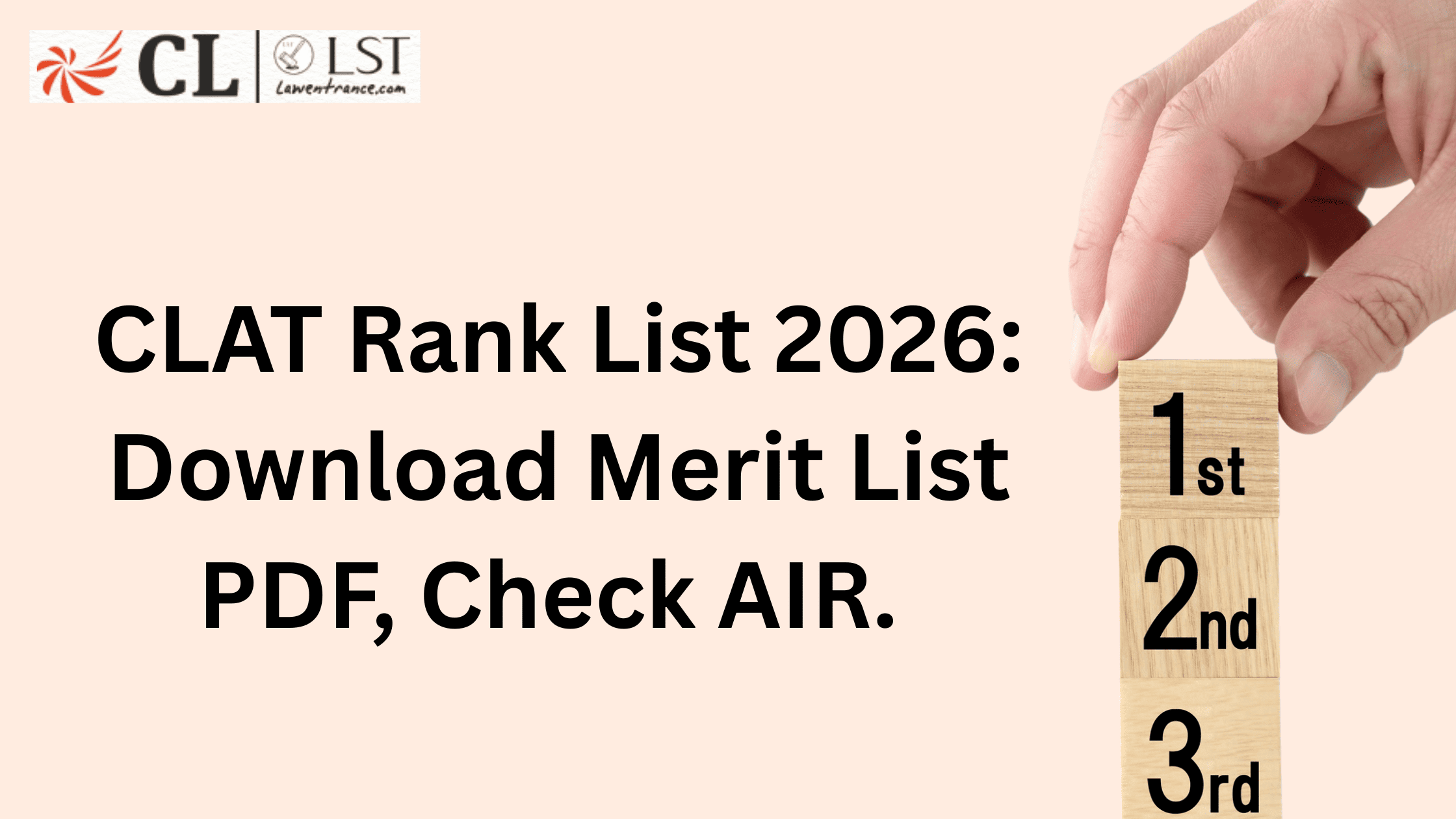
AILET vs CLAT: Difference Between CLAT and AILET

Difference Between CLAT and AILET has been a hot debate for a while. Countless candidates ask which one is better and what the differences are. Before that, let’s understand what CLAT and AILET stand for.
Table of Contents
Introduction
➜ CLAT, or Common Law Admission Test, is administered by the Consortium of National Law Universities to students seeking admission to National Law Universities (other than NLU Delhi and NLU Meghalaya) five-year LLB and LLM programs.
➜ Meanwhile, NLU Delhi conducts AILET or All India Law Entrance Test to enroll students in its BA LLB and LLM programs.
CLAT and AILET have several differences, including mark distribution, time length, and syllabus. To learn everything about the CLAT vs AILET, keep on reading.
CLAT vs AILET Overview
Let’s go over the basic CLAT vs AILET overview before we dive into the specifics.
| Detail | CLAT | AILET |
| Conducting Body | Consortium of National Law Universities | NLU Delhi |
| Exam Level | National Level | National level |
| Frequency of Exams | Once a year | Once a year |
| Participating Institutes | 24+ NLUs and 65+ participating institutes | NLU Delhi |
| Law Programmes Offered | 5 Year LL.B., LL.M. | B.A. LL.B., LL.M. |
Primary Difference Between CLAT and AILET
The main difference between CLAT and AILET is the colleges into which applicants can get admission after taking these two law entrance tests.
- CLAT 2026 will have 24 participating NLUs and 65 participating institutes in the test. Candidates who pass the CLAT test will be accepted into five different five-year integrated legal degrees and LL.M. programs.
- On the other hand, candidates who pass AILET 2026 will be accepted to NLU Delhi for the B.A. LL.B. and LL.M. courses. The only other NLU that still has its admission test to accept students is NLU Meghalaya.
CLAT vs AILET: Exam Pattern
The following are the differences and similarities between the CLAT and AILET exam patterns:
| Detail |
CLAT 2026 Exam Pattern |
AILET 2026 Exam Pattern |
| Mode of Exam | Offline | Offline |
| Duration | 2 hours | 2 hours |
| Type of Questions | Passage and Objective-type questions | Only objective-type questions (MCQs) |
| Number of Questions | 120 | 150 |
| Total Marks | 120 | 150 |
| Negative Marking | 0.25 mark per question | 0.25 mark per question |
| Exam Timing | 2:00 to 4:00 PM (as per the previous year) |
11:00 AM to 1:00 PM (as per the previous year) |
Difference Between CLAT and AILET Syllabus and Important Topics
Candidates should focus on the syllabus for both examinations. There is a significant variation between the CLAT 2026 syllabus and the AILET 2026 syllabus.
CLAT contains two additional sections and includes a quantitative approaches portion that AILET does not have. Some of the important topics for each section in CLAT and AILET are given below.
Sections |
CLAT Syllabus |
AILET Syllabus |
| English | Primary: Reading comprehension
Secondary: Contextual grammar, vocabulary, fill in the blanks |
Comprehension, grammar, sentence correction, and vocabulary |
| Current Affairs, including General Knowledge | National and international events in the fields of sports, economy, politics, arts, and culture. | Recent national and international events of significance from various fields such as politics, business, awards, sports, and arts & culture. |
| Legal Reasoning | Current legal affairs, important judgments, the constitution, the law of torts, and family law. | – |
| Logical Reasoning | Drawing conclusions and inferences from presented arguments | Logical and analytical reasoning skills |
| Quantitative Techniques | Basic arithmetic, mensuration, ratio and proportion, profit and loss, time and work. | – |
Source: Official CLAT Syllabus
CLAT vs AILET: Exam Eligibility
The exam eligibility for both CLAT and AILET is given below.
CLAT 2026: Eligibility Criteria
A candidate should have passed the Class 12th (or equivalent) exam from a recognized board or university. The required percentage to attend CLAT is:
- 45% marks in case of candidates belonging to General/OBC/specially-abled person (SAP) and other categories
- 40% marks in case of candidates belonging to SC or ST categories.
Candidates who finished and passed the Class 12th examination in April/May 2025 with the required percentage are also eligible for CLAT 2026.
There is no imposed age limit to attend the CLAT 2026 exam.
Check CLAT Eligibility Criteria to know more.
AILET 2026: Eligibility Criteria
A candidate should have passed the Class 12th (or equivalent) exam from a recognized board or university. The required percentage to attend AILET is:
- 50% marks in case of candidates belonging to General/OBC/specially-abled person (SAP) and other categories
- 45% marks in the case of candidates belonging to SC or ST categories.
Candidates who finished and passed the Class 12th examination in April/May 2025 with the required percentage are also eligible to attend the AILET 2026 exam.
There is no imposed age limit to attend the AILET 2026 exam.
Check AILET Eligibility Criteria to know more.
Participating NLUs in CLAT and AILET
NLU Delhi is the only participating law university under AILET. On the other hand, the CLAT score is taken into consideration by 24 NLUs spread across the country. A list of the top 5 NLUs that accept CLAT scores is given below.
- National Law School of India University, Bangalore
- NALSAR University of Law, Hyderabad
- The West Bengal National University of Juridical Sciences, Kolkata
- Gujarat National Law University, Gandhinagar
- National Law University, Jodhpur
Click the button below to see the updated list of all NLUs around India.
Is CLAT tougher than AILET?
CLAT is typically regarded as more difficult because of its length and complexity. It is a lengthy and reading-intensive legal entrance test. However, that is far from the truth. Because the difficulty level of an exam is deciphered on multiple levels.
Get an in-depth “toughness” analysis of both the exams in our blog: Is CLAT tougher than AILET?
On the surface level, below are a few differences highlighted between the two exams.
CLAT has five parts, whereas AILET has three.
CLAT additionally demands that applicants prepare for Mathematics, which is not present in AILET and may be tough for students. However, in the argument over which exam is more difficult, both AILET and CLAT are equally sophisticated and rigorous.
- The Consortium of National Law Universities has revised the CLAT syllabus from 2024, lowering the number of questions from 150 to 120 for the CLAT UG test. It was done to make the test more user-friendly for students.
- Following that, NLU Delhi revised its exam format for both the AILET UG and AILET LL.M. It has raised the exam time for UG by another 30 minutes. While AILET LL.M. has eliminated the descriptive component of LL.M. and replaced it with MCQs covering several topics of law.
Frequently Asked Questions
Question: Who conducts AILET?
Answer: AILET is conducted by NLU Delhi.
Question: Who conducts CLAT?
Answer: CLAT is conducted by the Consortium of NLUs.
Question: Is there an age limit for appearing in CLAT or AILET?
Answer: No. Both CLAT and AILET have no upper age limit to attend the exam.
Question: How many NLUs are taking part in CLAT 2026?
Answer: 24 NLUs of India will take CLAT 2025 scores for admission into UG and PG programs.
Question: Do CLAT and AILET have the same syllabus?
Answer: No, the syllabi of both exams are different. CLAT has five sections, and also a maths section. Meanwhile, AILET only has three sections.
Question: Which is better, CLAT or AILET?
Answer: Both exams are equally good because they provide opportunities for admission to major NLU in India. CLAT applicants can gain admission to 24 NLUs, while AILET candidates can only gain admission to NLU Delhi.
Suggested readings
| How to prepare for CLAT 2026? |
| CLAT previous year’s question papers |
| How to prepare for AILET 2026? |

![MH-CET Law 2025 Result OUT! [Direct Link to Score card]](https://www.lawentrance.com/blogs/wp-content/uploads/2025/06/ChatGPT-Image-Jun-5-2025-04_52_35-PM.png)





